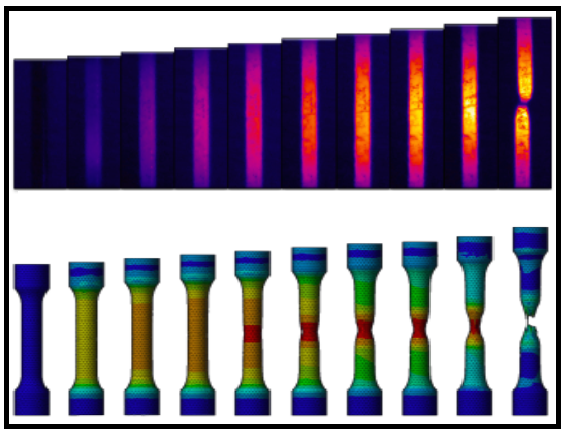IR, Spectroscopy, and Numerical Modelling Research Group
The research group focuses on the use of state-of-the-art methodologies in infrared thermography (IRT), spectroscopy, and numerical modelling to study the technological challenges associated with the Arctic environment.

Natural objects both reflect and emit radiation in the ultraviolet, UV, visible and infrared, IR, spectrums. The visible and UV part of the electromagnetic spectrums are already widely used because signatures in the visible and UV spectrum can tell us a great deal about the constituents of the atmosphere concerning pollution, greenhouse gases, water vapours and ozone. The infrared imaging and spectroscopy technique also has significant potential in engineering, clinical medicine, minerals search, gas leak detection, pollution surveillance, characterising of ice/snow/vegetation, etc. Because of this, the infrared part of the electromagnetic spectrum is receiving growing attention both in research communities and in industry. Since infrared covers a much larger part of the spectrum than the visual part we expect the interest in infrared technology, both scientific and commercial, will continue to grow in the coming years.
The low ambient temperatures typical of the Arctic are potentially beneficial in some industrial applications: refrigeration for fishing vessels and in LNG liquefaction along with cooling in carbon capture and storage (CCS) processes are all examples. Taking full advantage of the benefit of low ambient temperature in energy-intensive processes can often benefit from advanced numerical modelling techniques. The refrigeration industry, in particular, is currently focusing on the development of new processes using natural, environmentally refrigerants such as CO2, which has a low global warming potential compared to traditional refrigerants. In low ambient temperature operating environments, CO2 offers particularly competitive performance characteristics which can be effectively investigated and optimized using numerical modelling.
In all of the above cases, analyses of the data and modelling of the phenomena are of great importance. Research group members have expertise in specialized simulation software such as MATLAB, ANSYS, and HYSYS. The Group also have access to a number of labs and state-of-the-art equipment for research purposes.